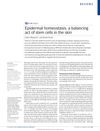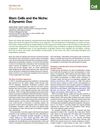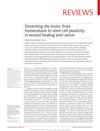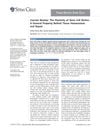Stem Cell Competition for Niche Occupancy: Emerging Themes and Mechanisms
February 2010
in “
Stem Cell Reviews and Reports
”
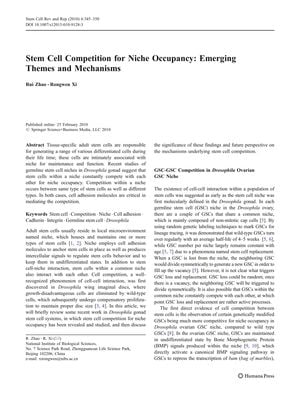
TLDR Stem cells compete for space using cell adhesion, and mutations can affect their competitive success, with implications for tissue health and disease.
The document summarizes research on stem cell competition for niche occupancy, with a focus on Drosophila gonad stem cell systems. It was found that germline stem cells (GSCs) compete for niche space, and this competition is influenced by cell adhesion molecules like E-cadherin. Mutations in genes that promote differentiation can lead to increased E-cadherin expression, giving mutant GSCs an advantage over wild-type cells. Additionally, competition between different stem cell types, such as GSCs and cyst progenitor cells (CPCs), involves integrin-mediated adhesion. The level of E-cadherin and integrin expression is key to a stem cell's competitive success. While the document highlights the importance of cell adhesion in stem cell competition, it also notes that the detailed mechanisms of stem cell replacement and the role of other factors, such as the JAK-STAT pathway, are not fully understood and warrant further research. The implications of these findings extend to tissue homeostasis and potential stem cell therapies, and the document suggests that similar competition may occur in mammalian systems, with mutations in stem cells possibly leading to diseases like leukemia.
